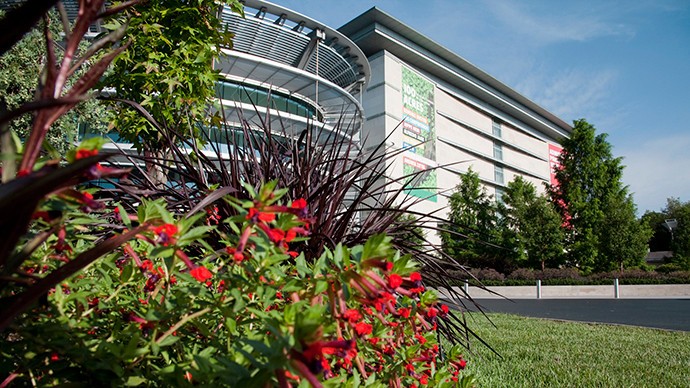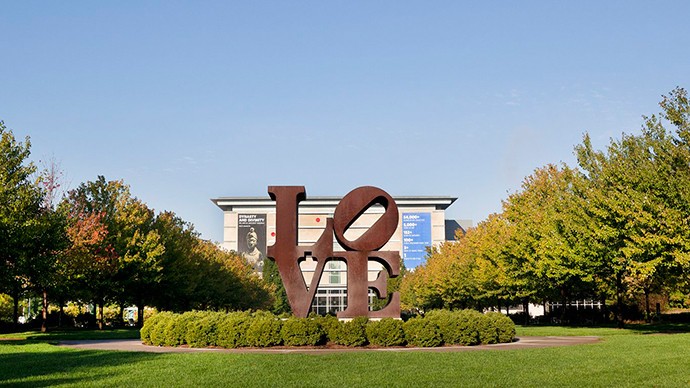Indianapolis Museum of Art
Introduction
Text-to-speech Audio
Images
Front entrance to the museum

The Clowes Pavilion in the Indianapolis Museum of Art

Love sculpture outside the museum

Backstory and Context
Text-to-speech Audio
History of the Indianapolis Museum of Art
In the summer of 1883, well-known suffragist May Wright Sewell and her husband, Theodore, as well as 17 other art-minded locals in Indianapolis, formed the Art Association of Indianapolis. The culmination of this group didn’t come out of the blue, however, as May Wright Sewell and Theodore were prominent reformers dedicated to bettering education, women’s rights, and world peace, and they were the original founders of the Girls' Classical School in Indianapolis the year before.
By November of 1883, after months of hard work contacting and organizing local and nationally renowned artists, the Art Association of Indianapolis held a large exhibition in the English Hotel in downtown Indianapolis. The exhibition featured 453 works from 137 artists, and the community’s response to the exhibition was nothing less than inspiring for the Association. May and the other founders drafted the Association’s mission statement afterwards.
Also, based off this success, the Indianapolis community established the Association as a respected factor on the cultural scene, which ultimately led to more exhibitions as well as lectures. The increase in membership and the growth of its collection led Indianapolis real estate investor, John Herron, to donate $225,000 from his estate with the goal of establishing a permanent art gallery and school.
The John Herron Art Institute then opened in a temporary home in 1902, and in 1906, the Institute opened in a permanent location designed by renowned architect, Arthur Bohn of Vonnegut & Bohn. Two years later, the art school opened, and throughout the 20th century, many prominent exhibitions featuring the works of Augustus Saint-Gaudens, Rembrandt, Matisse, Vermeer, and many others drew great esteem to the institute throughout the larger region.
By 1969, the institute changed its name to the Indianapolis Museum of Art, and its collection continued to expand to African and Asian works, most notably the Chinese ceramics and scrolls and folding screens from the Edo period.1
Sources
Robinson, Anne P.; S.L. Berry (2008). Every Way Possible: 125 Years of the Indianapolis Museum of Art. Indianapolis Museum of Art.
